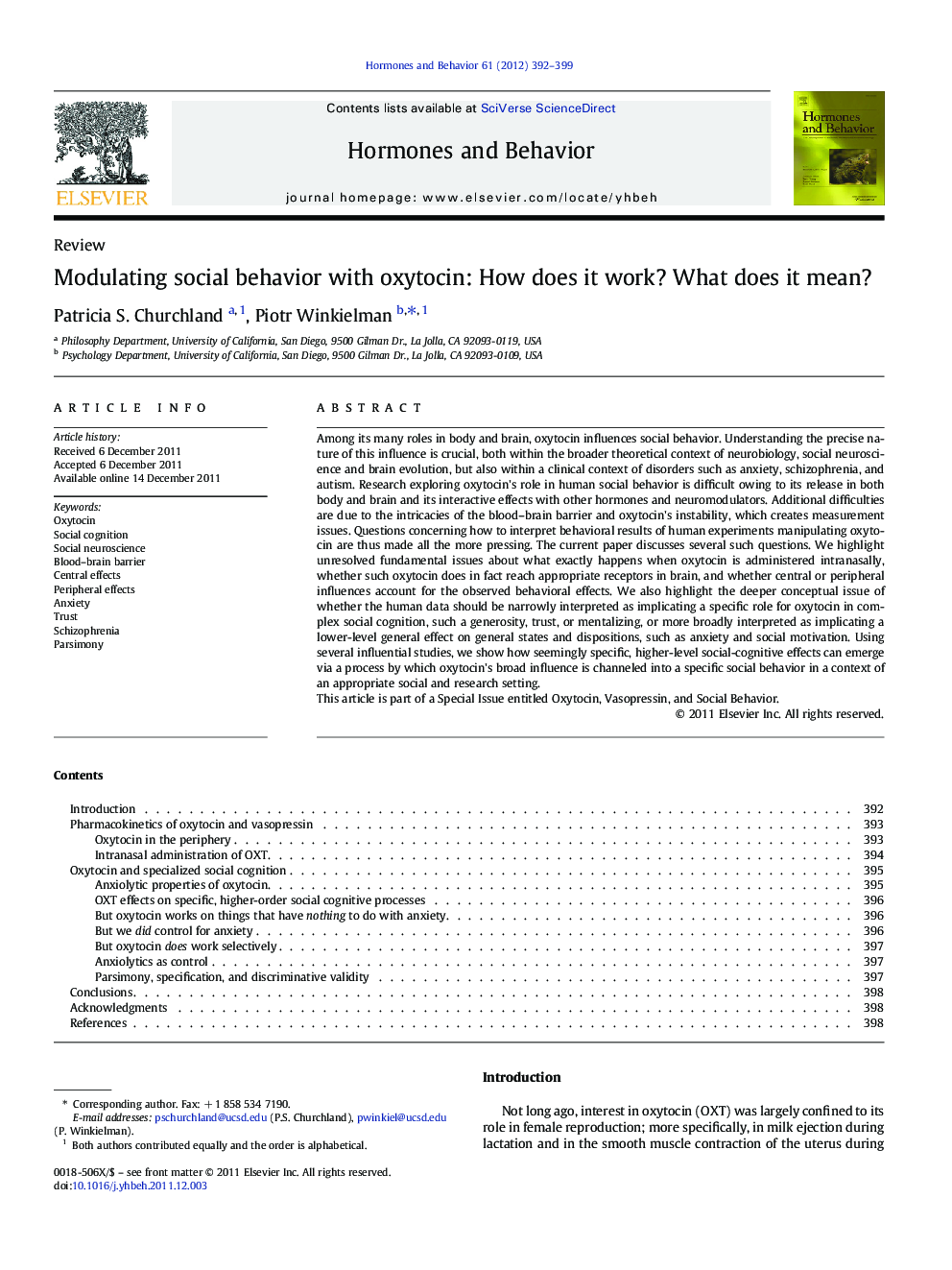| کد مقاله | کد نشریه | سال انتشار | مقاله انگلیسی | نسخه تمام متن |
|---|---|---|---|---|
| 323669 | 540740 | 2012 | 8 صفحه PDF | دانلود رایگان |

Among its many roles in body and brain, oxytocin influences social behavior. Understanding the precise nature of this influence is crucial, both within the broader theoretical context of neurobiology, social neuroscience and brain evolution, but also within a clinical context of disorders such as anxiety, schizophrenia, and autism. Research exploring oxytocin's role in human social behavior is difficult owing to its release in both body and brain and its interactive effects with other hormones and neuromodulators. Additional difficulties are due to the intricacies of the blood–brain barrier and oxytocin's instability, which creates measurement issues. Questions concerning how to interpret behavioral results of human experiments manipulating oxytocin are thus made all the more pressing. The current paper discusses several such questions. We highlight unresolved fundamental issues about what exactly happens when oxytocin is administered intranasally, whether such oxytocin does in fact reach appropriate receptors in brain, and whether central or peripheral influences account for the observed behavioral effects. We also highlight the deeper conceptual issue of whether the human data should be narrowly interpreted as implicating a specific role for oxytocin in complex social cognition, such a generosity, trust, or mentalizing, or more broadly interpreted as implicating a lower-level general effect on general states and dispositions, such as anxiety and social motivation. Using several influential studies, we show how seemingly specific, higher-level social-cognitive effects can emerge via a process by which oxytocin's broad influence is channeled into a specific social behavior in a context of an appropriate social and research setting. This article is part of a Special Issue entitled Oxytocin, Vasopressin, and Social Behavior.
► Understanding oxytocin's precise role in social behavior is crucial.
► Central and peripheral mechanisms contribute to oxytocin's effects.
► Blood–brain barrier and hormonal/neurotransmitter interactions complicate picture.
► It is unclear how intranasal oxytocin administrations lead to behavioral effects.
► It is doubtful that oxytocin directly influences complex social cognition in humans.
Journal: Hormones and Behavior - Volume 61, Issue 3, March 2012, Pages 392–399